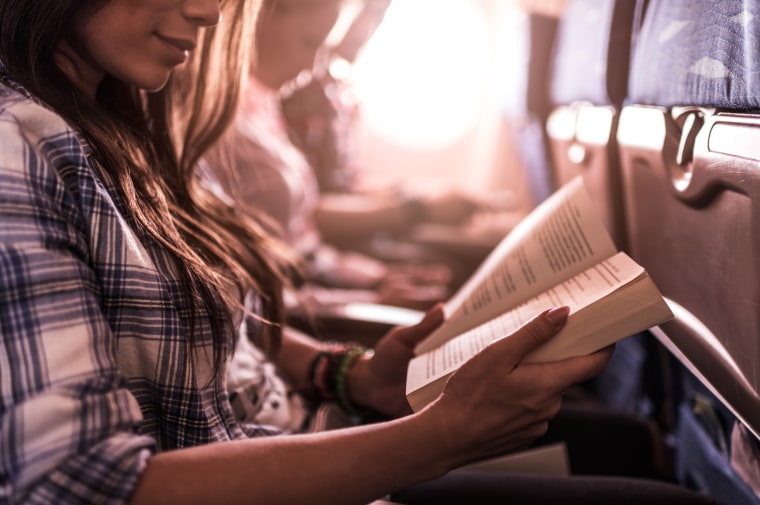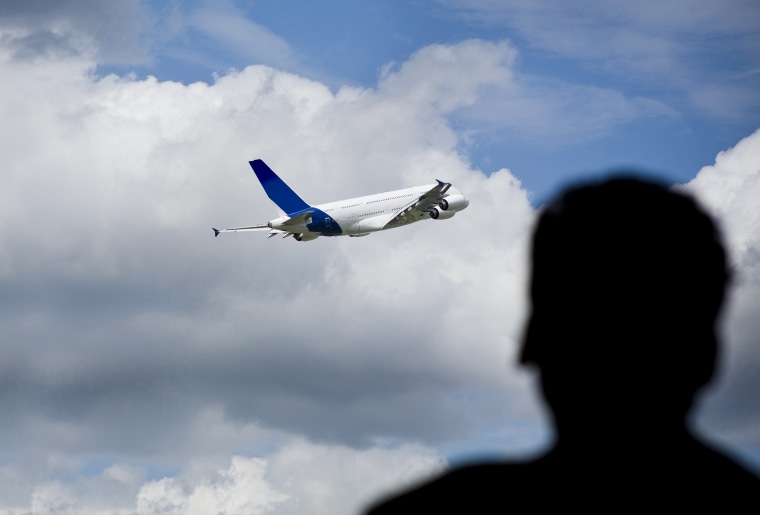You’re 30,000 feet in the sky, rubbing elbows with complete strangers, a baby fussing three rows ahead and the tops of clouds looking back at you from the nearest window. Nothing could feel less natural than this. Your eyes dart to nearby passengers to see how they’re reacting to what feels like a cruel social experiment on being confined in a tiny, jiggling box at a ridiculously high altitude.
One person, face lit up blue from their smartphone, is laughing at whatever is streaming, another is pensively flipping pages through her half-devoured novel, and the flight attendant is smiling calmly while taking drink orders. Those around you seem at ease, so why does it take every ounce of willpower you have not to freak as your knuckles go numb from the death grip you have on the arm rest?
What Fuels Our Fear of Flying?
According to the National Institute of Mental Health, about 6.5 percent of the U.S. population has aviophobia (a fear of flying), and roughly 25 percent experience some sort of flying-related anxiety.
“Some of the primary reasons some people are afraid to fly are a fear of crashing, a fear of being out of control, a fear of the unknown, a fear of heights, having lost a loved one in a plane crash and feeling claustrophobic,” says Ora Nadrich, a certified mindfulness meditation instructor and life coach. “Also, some people experience an overall sense of discomfort with the entire flying experience: airport procedures, crowds, turbulence, unappetizing food, cramped space and long flights.”
Anxiety is fueled by irrational, worst case scenario thoughts, and confined spaces are breeding grounds for this process.
Unsettling news reports — such as United Airlines personnel violently dragging a passenger off a flight, or American Airlines losing the ashes of a passenger’s daughter — can exacerbate flying fears, as well.
“Anxiety is fueled by irrational, worst case scenario thoughts, and confined spaces are opportunities for anxious thoughts,” explained Dr. Kevin Gilliland, a licensed clinical psychologist and author of Struggle Well, Live Well. He added, “Our anxious thoughts can be so powerful that they even activate our physical systems. That means our breathing becomes shallow, our chest gets tight, our palms get sweaty, we feel nauseated and maybe even lightheaded.”

How to Overcome Your Anxiety
In short: you’re not alone in your fear, and the anxiety you experience leading up to, and while aboard, your flight is very real (even if ultimately unfounded). There are ways to squash those fears, though, and it starts with a deliberate mental shift.
- Know the Facts
You’ve probably read through safety statistics, or have at least been told that driving is more dangerous than flying. This is a good start, but the more you educate yourself on these facts, the less your anxiety will be able to creep it. eDreams, a global travel site, points nervous travelers to Federal Aviation Administration (FAA) data that states that there’s a one in 11-million chance of being involved in an airplane accident, and even then, 96 percent of passengers survive airline accidents. Additionally, airplanes undergo extensive safety testing, ranging from wing flexibility to exposure to extreme temperature and beyond. You are truly safer in an airplane than you are in your own home.
There’s a one in 11-million chance of being involved in an airplane accident, and even then, 96 percent of passengers survive.
In addition to reading up on safety statistics, educate yourself on the physics of flying and how planes work, in general. Gilliland says, “Understanding the basics of flying — like the phases of a trip and the sounds that planes make, can help. Without knowledge, anxiety leads us to make up really bad stories.”
- Release and Replace Your Thoughts
In addition to educating yourself, you must also work to combat all of those “worst case” thoughts. If you tell yourself the same thing over and over again, you may eventually believe it, which breeds anxiety. To stop the cycle, Nadrich recommended using a technique she calls, “release and replace.”
“You take a thought like, ‘I’m afraid to fly because I think the plane will crash,’ and replace it with something like, ‘I am aware that flying frightens me, but I believe I will be fine and the plane will not crash.’ By doing this exercise repeatedly, you will feel less anxiety because your positive thought will override your negative thought,” she says.
Other positive affirmations could be, “I am safe;” “I am fine;” and “I am in good hands.” Anytime you begin to feel afraid, repeat those phrases over and over again in your mind.

- Distract Yourself
Even if your flight is only an hour long, that’s a good chunk of time to sit, stew and work yourself up into a panic. Prior to departing, create a feasible checklist of things you want to accomplish while up in the air, and then work diligently to check those items off. Maybe you want to read a chapter of your book, brainstorm birthday gift ideas, write those thank-you notes you’ve been putting off, work on a business project or organize images on your phone or computer.
Another way to distract yourself is to use a tool Nadrich calls a “visualization.”
“Imagine yourself somewhere that is picturesque and beautiful, either a place or country you have been to that you loved, or somewhere you would like to go. By seeing yourself somewhere that calms, soothes or pleases you – and allowing yourself to be fully there — it will begin to relax you and reduce anxiety in your body,” explained Nadrich.
Visualization is a powerful tool to have in your back pocket: Research conducted by Dr. Elisha Goldstein showed that those who spent five minutes a day practicing a guided meditation exercise similar to the one above reported significantly reduced stress levels and enhanced feelings of well-being. You might even consider downloading a meditation app with guided imagery tracks on your phone to turn on during especially tense times like takeoff and turbulence.
- Focus on Your Breathing
If you’re up in the air and you begin to feel panicked, redirect your thoughts to your breathing. “Anxiety often leads us to breathe shallowly and rapidly,” says Gilliland. “Slow, big breaths can help us relax the body, and the mind usually follows.”
Nadrich recommended breathing in through your nose for two counts, holding for two counts, gently exhaling for four counts, and then holding for one count. Repeat five to 10 times. Deliberate breathing puts you in control of your body and your mind, allowing you to be the observer instead of the reactor.
According to The American Institute of Stress, "deep breathing increases the supply of oxygen to your brain and stimulates the parasympathetic nervous system, which promotes a state of calmness." Focusing on your breath also shifts your focus from your mind to your body, which can help quiet racing thoughts.
Giving yourself more control over the entire flying experience requires practice and deliberate effort. But if you follow this advice, you’re on your way to calmer skies.

